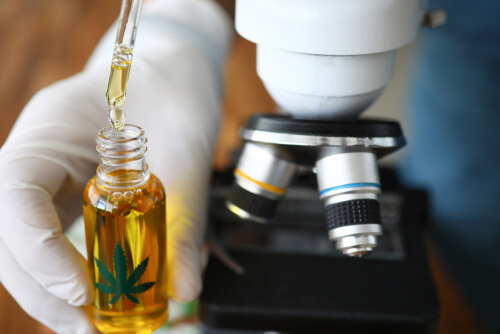
Cannabis shoppers are entitled to know what the plant’s derivatives contain. Unfortunately, ongoing studies have shown that many CBD labels and packaging elements are not in line with third-party laboratory test results.
Some cannabis industry players are considered ‘bad actors’ when their product labels do not match those test results. Anyhow, facts may be much more complicated than that.
In a recent JAMA Network cohort study, cannabis products did not always have phytocannabinoid metabolites as expected. It spotlighted cannabis label claims that independent lab tests for phytocannabinoids in urine did not support.
Up to 96 people in the study contributed 256 samples of urine at five different times in 38 months that ended last August. Every single one of them classified their commercial cannabis goods as being CBD-dominant/THC-dominant, or about the same quantities of both cannabinoids.
Results show a lack of cannabinoid metabolites in around 30% of samples after participants reported utilizing CBD-dominant goods. There was a lack of the metabolites in about 40% of product samples classified as having equal amounts of cannabidiol and THC.
No THC metabolites were in about 11% of samples collected following THC-dominant product use, and none was detected in about 35% of samples where people used about equal THC-CBD goods.
Furthermore, almost 20% of study participants’ samples did not have any measurable cannabidiol after vape cartridge use, despite vaping being the most prevalent delivery method.
Those are unsurprising results if you consider the lack of THC and CBD labeling standards in this industry.
A recent research letter from JAMA raised comparable concerns. Researchers checked 84 CBD goods bought online, and they discovered 26% of those had less cannabidiol than the claimed quantities.
In the year 2014, the FDA tested 23 goods and found that cannabidiol concentration was only consistent with 35% of their respective manufacturers’ label claims.
A subsequent study from the FDA evaluated 147 goods, many of which came with claims regarding specific CBD quantities. However, the results indicated the following.
- That 18% of those goods contained 80% less than what was claimed
- That 45% of the items were inside 20% of what their producers claimed
- That 37% of those had over 120% of cannabidiol purported in their label claim
Are Bad Actors Responsible?
Spontaneous reactions to those studies entail assuming that the manufacturers concerned are bad players that consciously intended to cheat or defraud customers. However, it may be wiser to factor in less malevolent and equally possible root causes of the discrepancies, such as the relatively small sample size involved in the testing process.

